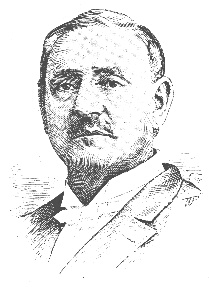Born: 06 Jun 1827 at Mystic, CT
Died: 1909 at Mystic, CT
Father: Capt. Jeremiah SAWYER
Mother: Emeline Olive KELLY
Spouse: ?
Children: ?
At right, a portrait of Moses, from NCAB ===>>

Born: 06 Jun 1827 at Mystic, CT
Father: Capt. Jeremiah SAWYER Spouse: ? Children: ?
|
|
From the NCAB: Moses Havens SAWYER, consul and author, received an academic education, and afterward read law and history. Inheriting a fondness for the sea, at the age of 23 he was entrusted with the command of a New York and East Indian ship, and those voyages proving very successful, he accumulated much property. At the outbreak of the Civil War he entered the U.S. Navy as navigating officer, serving with distinction under Farragut SMITH, and other commanders, and was in a number of engagements, notably that off Ship Island, between the Federal ship Massachusetts and the Confederate gunboat Florida. Resigning from the Navy, he engaged in various financial operations in Wall Street, New York City, where he lost most of his fortune. Becoming active in local politics, he was one of the speakers for Grover CLEVELAND in the campaign of 1884, and in 1886 was appointed by CLEVELAND, U.S. Consul at Trinidad and Tobago, retaining the office for 15 months during the [Benjamin] HARRISON administration. Among his literary works which have attracted special attention are: "Lieutenant Colburn" (a novel), "Trinidad, the Pearl of the Antilles," "History and Annexation of Tobago," "Judicature," "Mortgages," "Desertion of Seamen," "Immigration," "Ornithology," and treatises on coffee, cocoa, sugar and the celebrated Trinidad lake of asphaltum. All but the first were published by the U.S. government. Mr. SAWYER was a member of the G.A.R. Post William; of the Naval Veteran Association, and of Meridian Lodge 77 F. and A. M. of Connecticut, and a member of the Tariff Reform Club and Woman Suffrage League of New York. His last years were divided between New York and Mystic, CT.
Here's a scan of the write-up on Moses from the original 1893 version of the NCAB.
Source: The National Cyclopaedia of American Biography (NCAB), vol. II, p. 62
